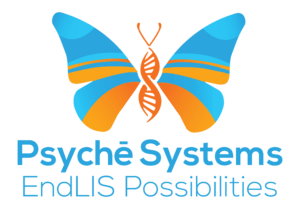[vc_row type=”in_container” full_screen_row_position=”middle” scene_position=”center” text_color=”dark” text_align=”left” overlay_strength=”0.3″ shape_divider_position=”bottom” bg_image_animation=”none”][vc_column column_padding=”no-extra-padding” column_padding_position=”all” background_color_opacity=”1″ background_hover_color_opacity=”1″ column_link_target=”_self” column_shadow=”none” column_border_radius=”none” width=”1/1″ tablet_width_inherit=”default” tablet_text_alignment=”default” phone_text_alignment=”default” column_border_width=”none” column_border_style=”solid” bg_image_animation=”none”][vc_column_text]Data, analytics, and insights. These concepts are thrown around a lot, but what do these words really mean, and how are the interrelated with one another? Let’s take a look to understand how this triad works together…
What Is Data?
Data is the information you obtain and store in your laboratory database, such as patient, visit, and case information. Today, we have access to more data than ever before. In fact, more data has been created in the last two years than in all of human history! With so many ways to connect to and access the internet, data collection and storage has become increasingly challenging. Big data is the new norm as businesses collect user data across a multitude of channels including enterprise applications, apps, email, and web browsing. Despite this overwhelming multitude of data, it’s extremely difficult to make any sense of pure data points without some way to structure and present this information.
What is Analytics?
Analytics is the discovery of patterns and trends gleaned from your data. Data is more or less useless nonsense without analytics. Analytics is how you make sense of your data and uncover meaningful trends. There is tremendous value buried in those massive data sets, but apps and other businesses are unable to unlock that value without the help of analytics. Essentially, you can only optimize what you measure. Analytics is the first step on the journey to construct meaningful measurements of your data. In a laboratory information system notification app, your data might tell you that you completed 4,000 cases last month. That data alone doesn’t mean all that much, but an analytics tool could dig through that data and reveal that orders increased 3.5% month over month. Now your data is starting to work for you!
What are Insights?
Insight is the value obtained through the use of analytics. The insights gained through analytics are incredible powerful, and can be used to grow your business while identifying areas of opportunity. Insights provide the “ah-ha” light bulb that sparks smart opportunities you can take advantage of. Insights can be used to illustrate areas where you can reduce costs, improve performance, and uncover bottlenecks and roadblocks in your business.
If we continue with our laboratory information system example, insights might show that inbound orders have been increasing steadily at around 3% per month for the last 6 months. By comparing the order volume against turnaround times, is becomes clear that as order volume is increasing, turnaround time is also increasing. To maintain the same level of fast turnaround, you may have to consider adding additional staff or finding other performance improvements to sustain the increased order volume.
Insights are the ultimate goal
The real value of data and analytics lies in their ability to deliver rich insights. You can have mountains of data points, but you need to be able to digest and organize that data using analytics, which allows you to pull out valuable insights, or else it’s all worthless. The best insights are actionable and prescriptive – they can be used to take immediate action that will improve your business and will inform your future path.
Psychē Systems can help
Psychē Systems has identified the important need for our laboratory customers to leverage their data and use analytics to discover insights. Psychē has an easy to use product called ē.Dashboard which is fully integrated into all of Psychē’s Laboratory Information Systems products. Psychē understands the need to help labs save money, improve productivity and increase revenue though the actionable insights ē.Dashboard provides.

Sean joined Psychē Systems in 2013. He is a software industry veteran and entrepreneur with over 35 years of experience in both large enterprises and start-up environments. He is currently Psychē’s Chief Technology Officer. Sean has a Bachelor of Science degree with a minor in Electrical Engineering from Worcester Polytechnic Institute. He has also attended the Babson College MBA program, and is an FAA certified pilot.[/vc_column_text][/vc_column][/vc_row]

